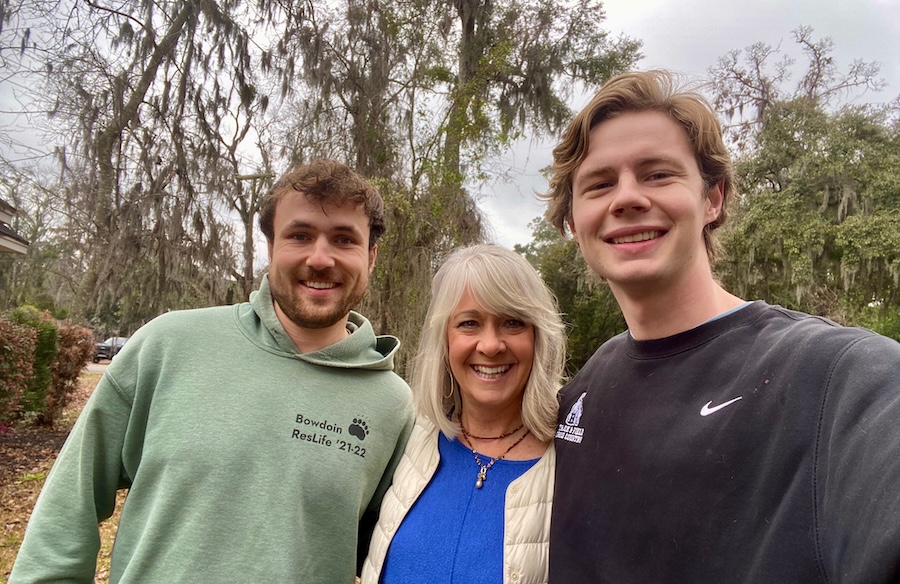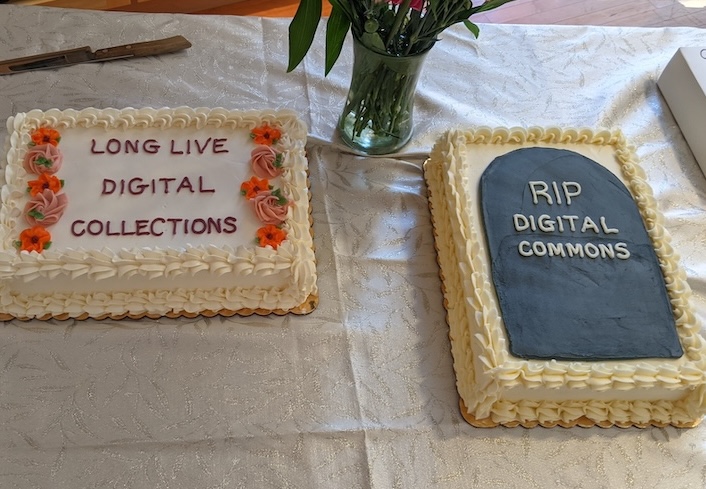Reexamining Nathaniel Hawthorne’s Bowdoin Silhouette
By Tom PorterIn 1825, the great novelist-to-be Nathaniel Hawthorne sat, along with many fellow Bowdoin students, to have his likeness recorded by a silhouette artist. Or did he?

Today the College owns two copies of Hawthorne’s image as it was purportedly captured two centuries ago.
Director of Special Collections & Archives Kat Stefko recently took on the task of reexamining that Hawthorne image so familiar to Bowdoin (particularly visitors to the College library).
“His is one of the thirty-three faces, cut in profile from white paper and mounted on a black background, that compose a framed set of silhouettes of Bowdoin’s famed Class of 1825,” says Stefko, who last year published her findings in an article in the Nathaniel Hawthorne Review, a journal featuring essays, notes, queries, book reviews, and bibliographies on the writer’s life and works.
Hawthorne was a member of a particularly auspicious class year, she notes. The Class of 1825 also included the poet Henry Wadsworth Longfellow, three US representatives, and one US senator.
The authenticity of this image, signed “Hath,” has long been debated among Hawthorne scholars, says Stefko. The signature is plausible: when Hawthorne enrolled at Bowdoin College in 1821, his surname was spelled “Hathorne,” and his classmates referred to him informally as “Hath.” (Hawthorne toyed with adding the “w” at Bowdoin and did so formally at a later date, she explains.) But, she adds, working against the authenticity of the image are the published recollections of Hawthorne by his Bowdoin classmate, Horatio Bridge, who recalled definitively that Hawthorne did not sit for a silhouette in 1825 when the rest of the senior class did.
“These remarks,” Stefko points out, “are in keeping with the characterization of Hawthorne by his college professors and classmates as unrelentingly shy”—the sort of young man who preferred “long quiet walks in the pines near campus” to any kind of group activity.

The contradiction became all the more intriguing when a second copy of the silhouette emerged recently after Bowdoin College acquired the papers of Hawthorne’s close friend and classmate Jonathan Cilley.
Among these papers is a bound copy of the Class of 1825 silhouettes, which includes the “Hath” profile, but this one is signed “N.Hawthorne,” with the ‘w’ included.
Stefko set out to answer the question of the image’s authenticity and date, combing through circumstantial and physical evidence. Her investigations included an analysis of the watermarks on the paper the silhouettes are on, stylistic differences between silhouettes cut in 1823 and 1825, and an examination of the testimony of three autograph specialists who looked at the “N. Hawthorne” signature on the Cilley image.
Stefko concludes that the two Hawthorne silhouettes now owned by Bowdoin are most likely originals, but cut in 1823 not 1825. Stefko sought to publish her findings to encourage other Hawthore scholars to consider anew the Hawthorne silhouette, which for the first time can be studied in two copies, side by side, in the reading room of the George J. Mitchell Department of Special Collections & Archives: “I hope future researchers will continue to mine the depths of archival records here at Bowdoin and elsewhere to try to further answer the question of whether it is ‘Hath’ or ‘Hath Not.’” Read more about Stefko’s investigation.



